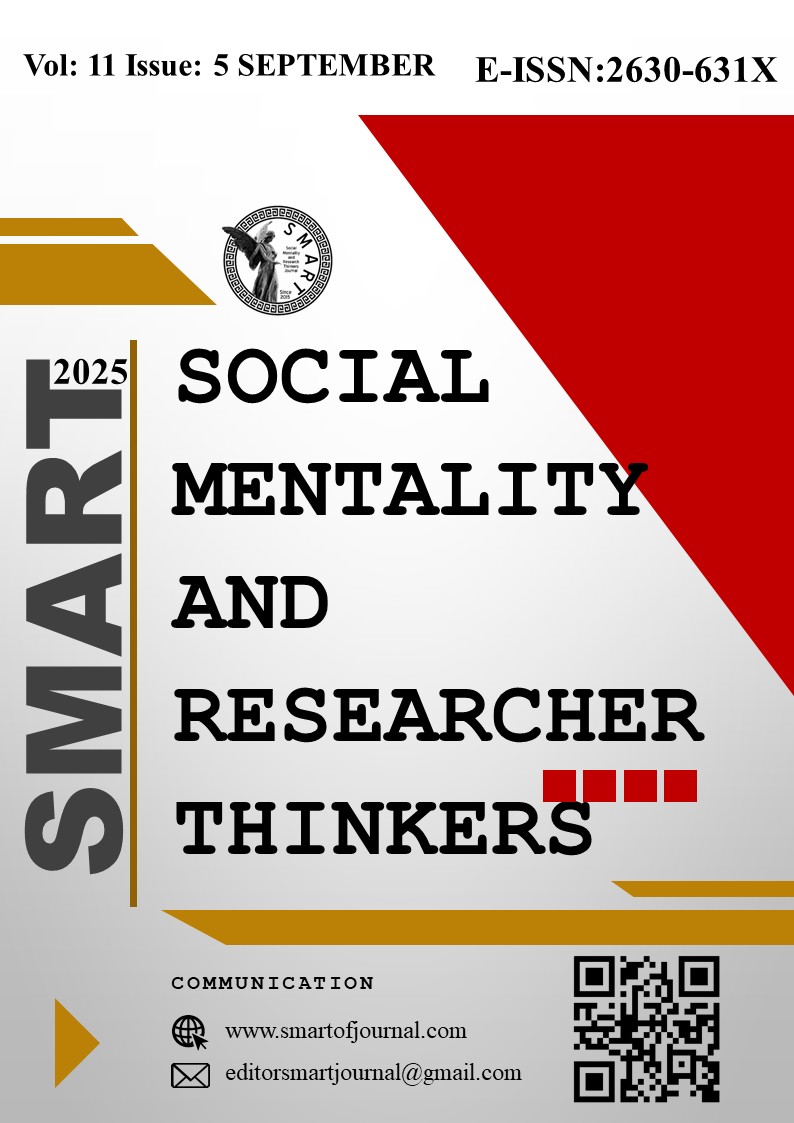Author :
Abstract
Takı sanatının tarihsel yolculuğunu Paleolitik dönemden günümüze uzanan geniş bir perspektifle ele alan bu çalışma, takının sadece bir süs eşyası olmanın ötesinde, sosyal statü, dini inanç, kimlik inşası ve kültürel aktarım gibi pek çok farklı anlam taşıdığını vurgulamaktadır. İnsanlığın teknolojik ilerlemesiyle birlikte takı tasarım ve üretim süreçlerine dijital teknolojilerin entegrasyonu incelenmekte, özellikle 3D baskı, lazer kesim ve Cad/Cam gibi teknolojilerin geleneksel yöntemlerin yerini alarak daha karmaşık, kişiselleştirilmiş ve hızlı üretim imkanları sunduğu belirtilmektedir. Dijitalleşmenin takı sektöründeki etkileri, sanal ve artırılmış gerçeklik uygulamalarıyla müşterilerin sanal deneme ve kişiselleştirme imkanlarına kavuşması, online platformların tasarımcı ve müşteriler arasındaki doğrudan iletişimi sağlaması ve e-ticaretin takı satışında yeni iş modelleri ve tüketim alışkanlıkları yaratması üzerinden detaylandırılmaktadır. Makalede ayrıca, gelecekte takı sanatının teknolojik gelişmelerle birlikte geleneksel ve modern tasarımların harmanlanacağı, akıllı mücevherlerin ortaya çıkabileceği ve dijital platformların satış ve tanıtımda daha da önem kazanacağı öngörülmektedir. Sonuç olarak, takı sanatının geçmişten bugüne değişimlere ayak uydurduğu ve dijital çağın getirdiği yeniliklerle birlikte evrilmeye devam edeceği ifade edilmektedir. Geçmişte kullanılan el aletlerine ve usta ya da zanaatkar kavramlarına bakıldığında, bir kısmı değerini korumakta bir kısmı da yok olmuş durumdadır. Gelecekte kullanılacak olan tasarım dili, üretim aşamalarında kullanılan materyal ve teknikler, satış platform ve tekniklerinin de gelişmeye devam edeceği düşünülmektedir.
Keywords
Abstract
This study, which deals with the historical journey of jewellery art from the Palaeolithic period to the present day, emphasises that jewellery is not only an ornament, but also carries many different meanings such as social status, religious belief, identity construction and cultural transmission. The integration of digital technologies into jewellery design and production processes with the technological progress of humanity is examined, and it is stated that technologies such as 3D printing, laser cutting and Cad/Cam replace traditional methods and offer more complex, personalised and fast production opportunities. The effects of digitalisation on the jewellery industry are detailed through the virtual and augmented reality applications that allow customers to experiment and personalise their jewellery, online platforms that enable direct communication between designers and customers, and e-commerce that creates new business models and consumption habits in jewellery sales. The article also predicts that in the future, jewellery art will blend traditional and modern designs with technological developments, smart jewellery may emerge and digital platforms will gain more importance in sales and promotion. As a result, it is stated that the art of jewellery has kept pace with the changes from past to present and will continue to evolve with the innovations brought by the digital age. When we look at the hand tools used in the past and the concepts of master or craftsman, some of them preserve their value and some of them have disappeared. It is thought that the design language to be used in the future, the materials and techniques used in production stages, sales platforms and techniques will continue to develop.





